Ozark Mock Orange (Philadelphus pubescens) of the Hydrangea (Hydrangeaceae) family, formerly of the Saxifrage (Saxifragaceae) family, is a deciduous shrub with bold, showy, four-petaled white flowers. The genus name is said to honor Ptolemy II Philadelphus, pharaoh of Egypt, 283-246 BC. The specific epithet is Latin for “downy.” The common name “mock orange” refers to the flowers’ similar appearance to those of the true orange (Citrus sinensis). Species distribution in the U.S. is intriguing, with both native and introduced populations: Ozark Mock Orange grows primarily from eastern Oklahoma to Tennessee and sporadically in adjoining states; isolated populations are also to be found from as far west as Wyoming to Massachusetts in the East. In Arkansas, plants occur primarily in the Ozark Highlands and Boston Mountains, higher elevations of the Arkansas Valley, and in the Ouachita Mountains. Habitats include dry-mesic to mesic, loamy to rocky soils and rock outcrops of open woodlands and woodland borders, as well as stream banks. The species is also known as Downy Mock Orange, Gray Mock Orange, and Hoary Mock Orange.
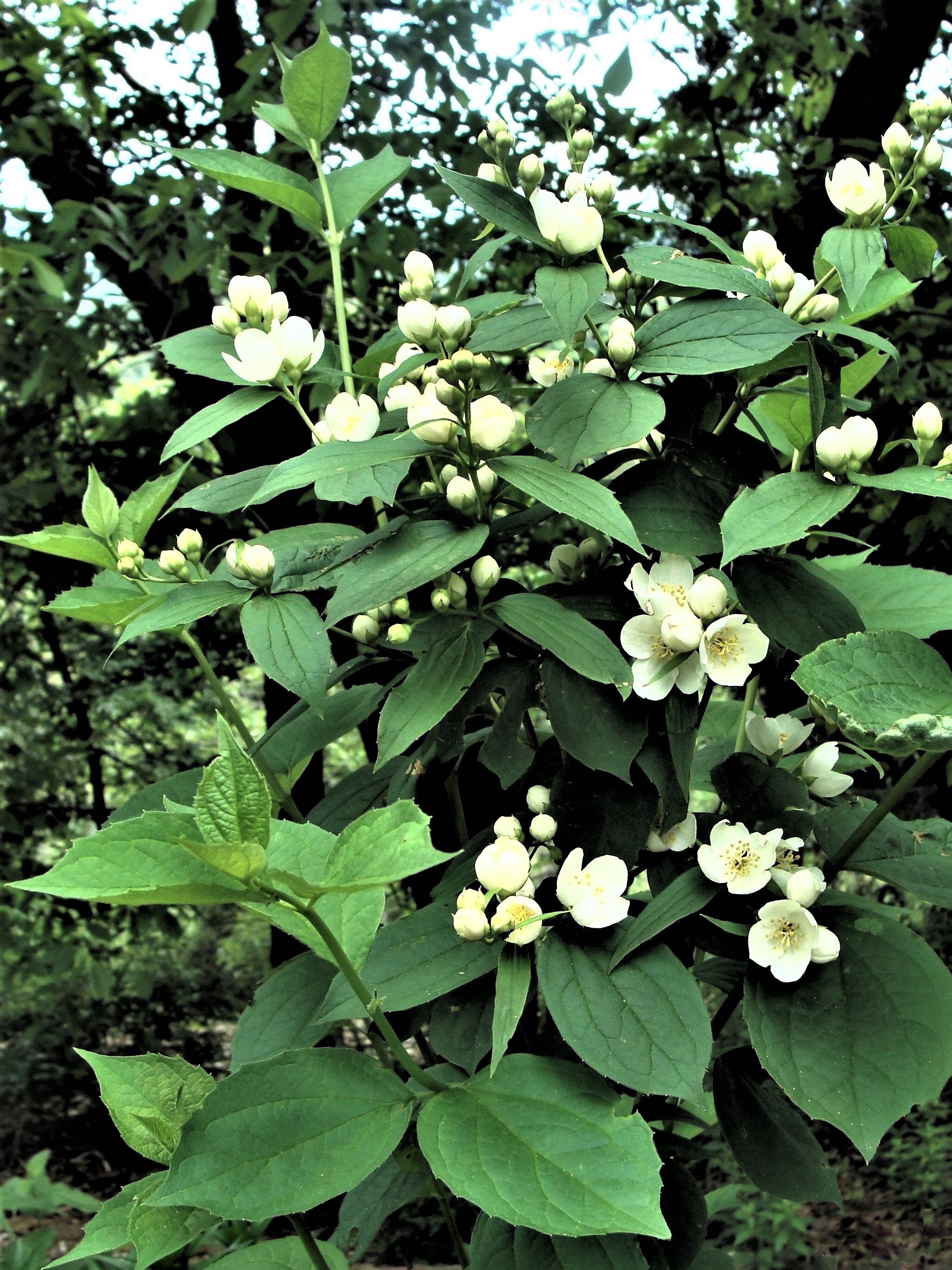
The open to compact base of this deciduous shrub has a few to numerous stems of various ages. While young root-shoots tend to be slim and erect, older stems are spreading and arched. A few root-shoots may sprout a foot or more away from a parent plant and become clonal plants. In about the third year, thin bark may split but mostly remains tight on all but the oldest stems. Shrubs typically reach 8 feet tall but may be 12+ feet.
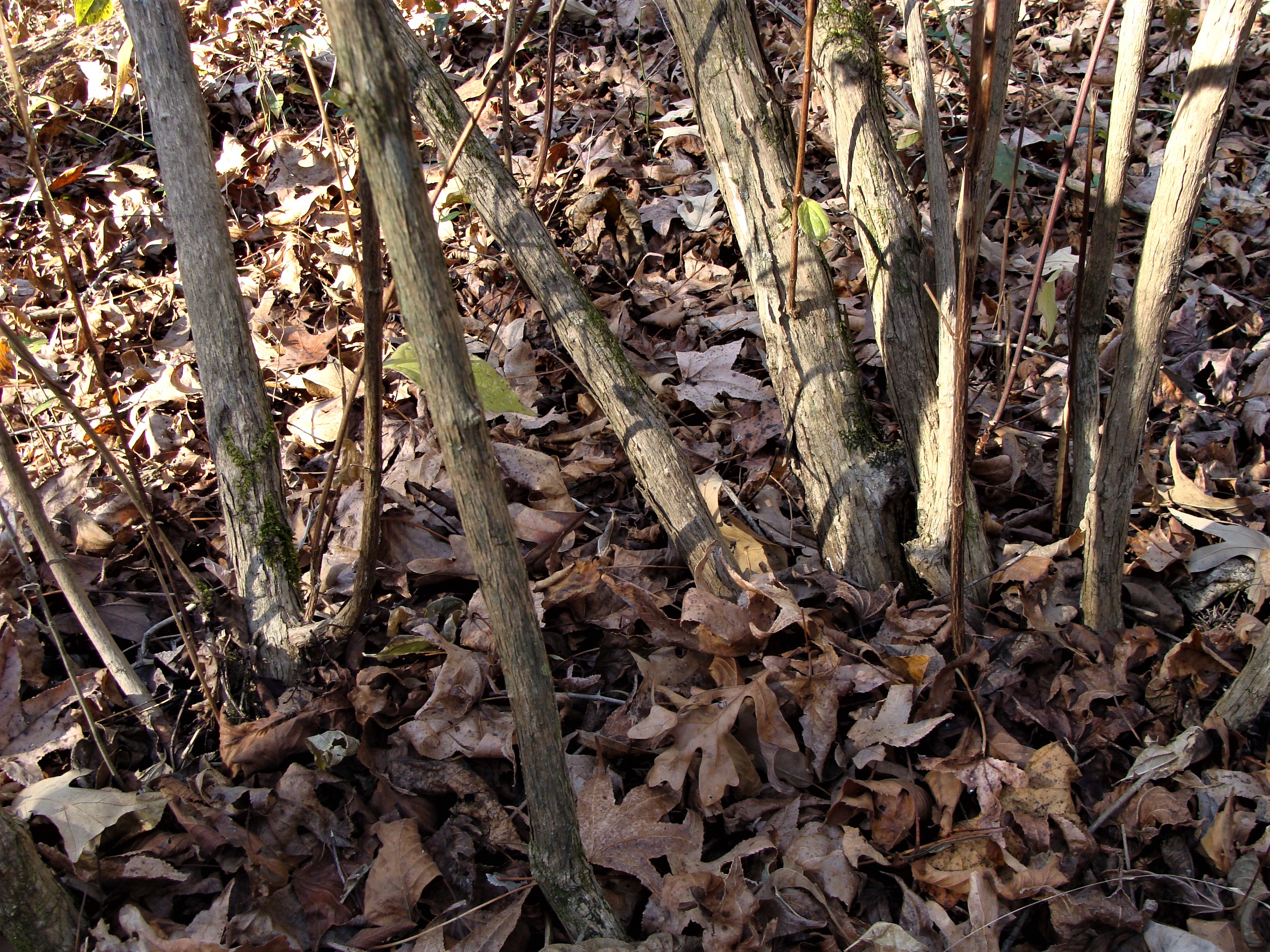
Overwintering terminal and lateral buds are hidden. New branches, growing from these buds, may be strictly vegetative or fertile, with both leaves and flowers (see Photo 1). Additionally, new robust vegetative stems, with rapid growth (2 to 6 feet) in their first year, sprout directly from the rootstock and along the higher portion of arched mature stems. With lateral leaves having a single axillary bud, if that bud produces a flower, that portion of the twig dies after producing fruit. New stems, branches and twigs, typically glabrous, change from pale green to reddish to tannish brown, within several months. Stem pith is white.
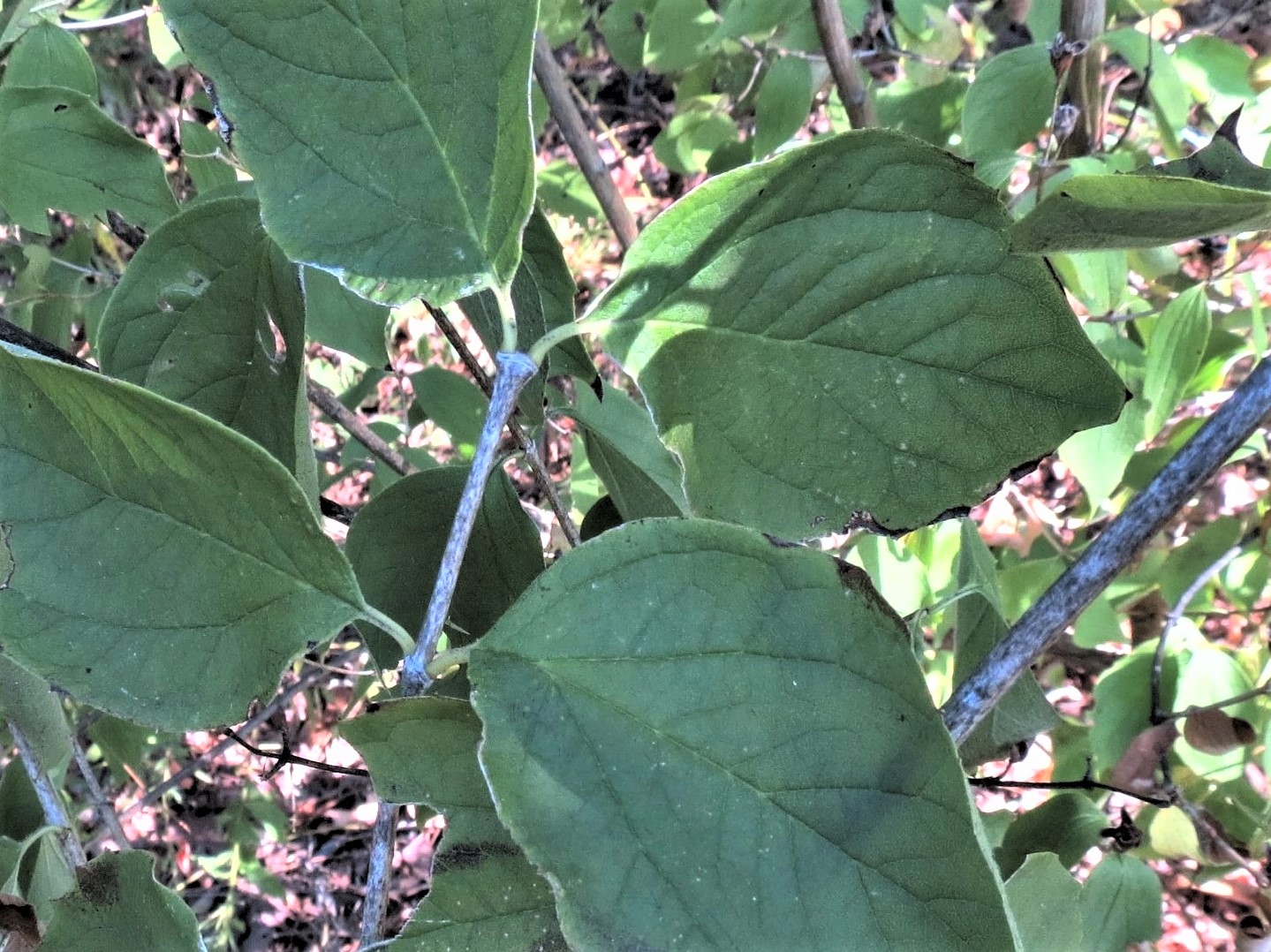
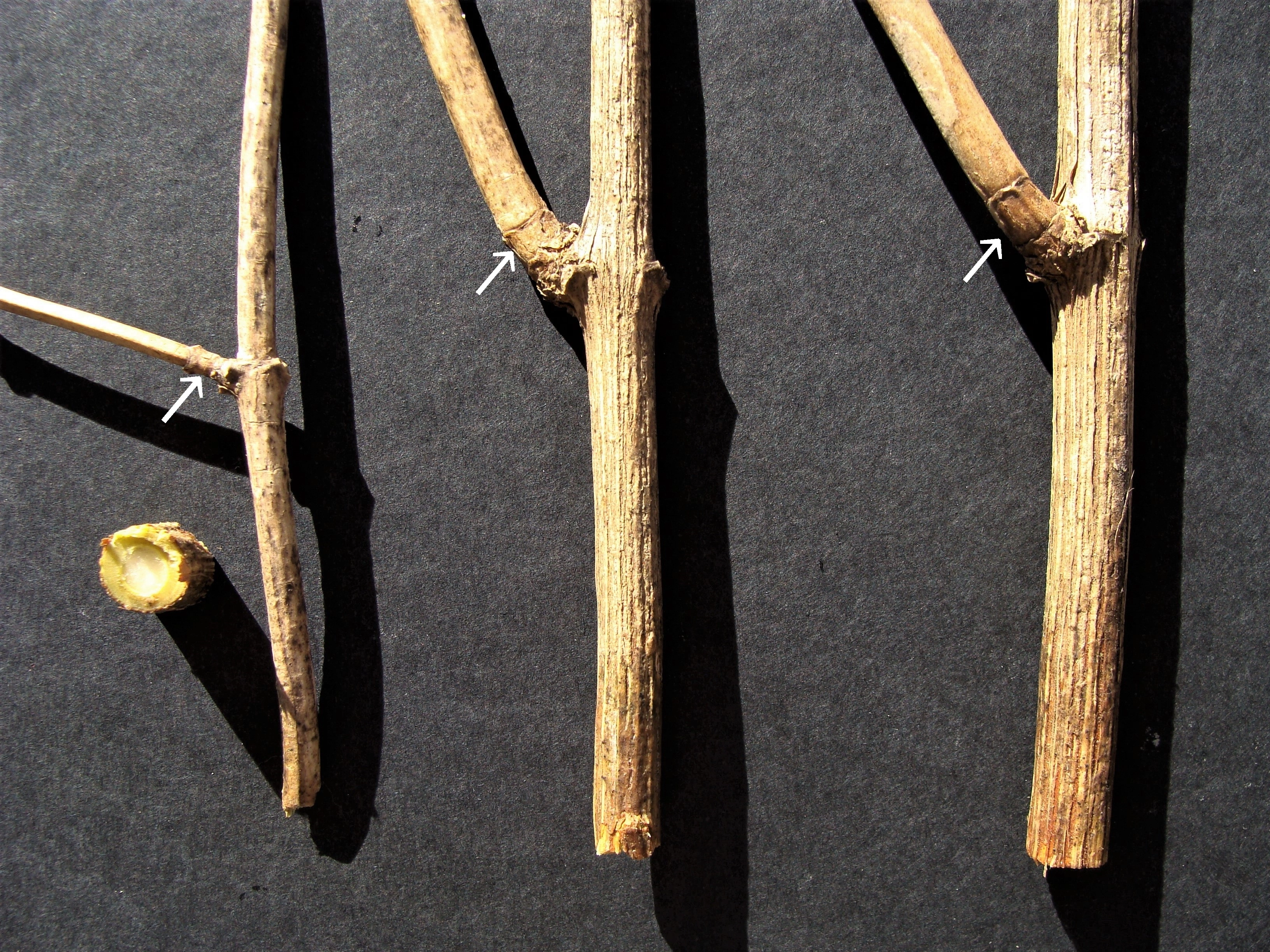
The simple petiolate leaves occur in opposite decussate pairs. Leaf pairs on twigs quickly decrease in size, distally becoming early-deciduous linear bracts that subtend the uppermost pair of flowers. Larger leaves are broadly ovate with a short-acuminate apex and rounded base, while smaller leaves are narrowly elliptic. A larger leaf may be to 3½ inches long, with a ¼ inch petiole, and 2⅜ inches wide. Elliptic leaves tend to have entire margins; margins of ovate leaves tend to have a half-dozen or so sharply pointed, shallow teeth along the distal half. Leaves are green above and lighter green below. Venation is pinnate, with secondary veins arching toward the apex. Dense pubescence occurs on the lower surface of blades and petioles. The upper leaf surface is glabrous with an occasional hair along the main veins.
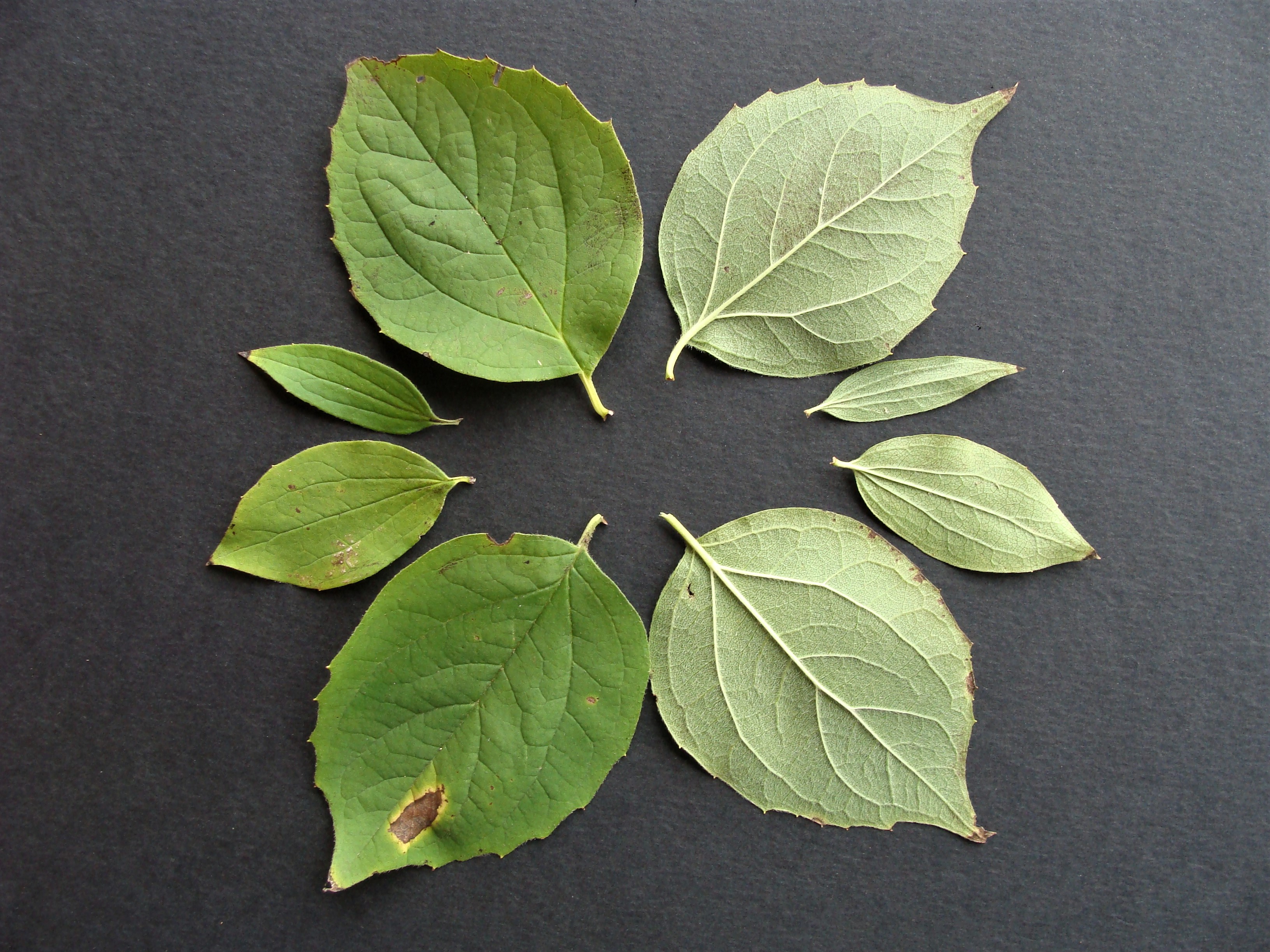
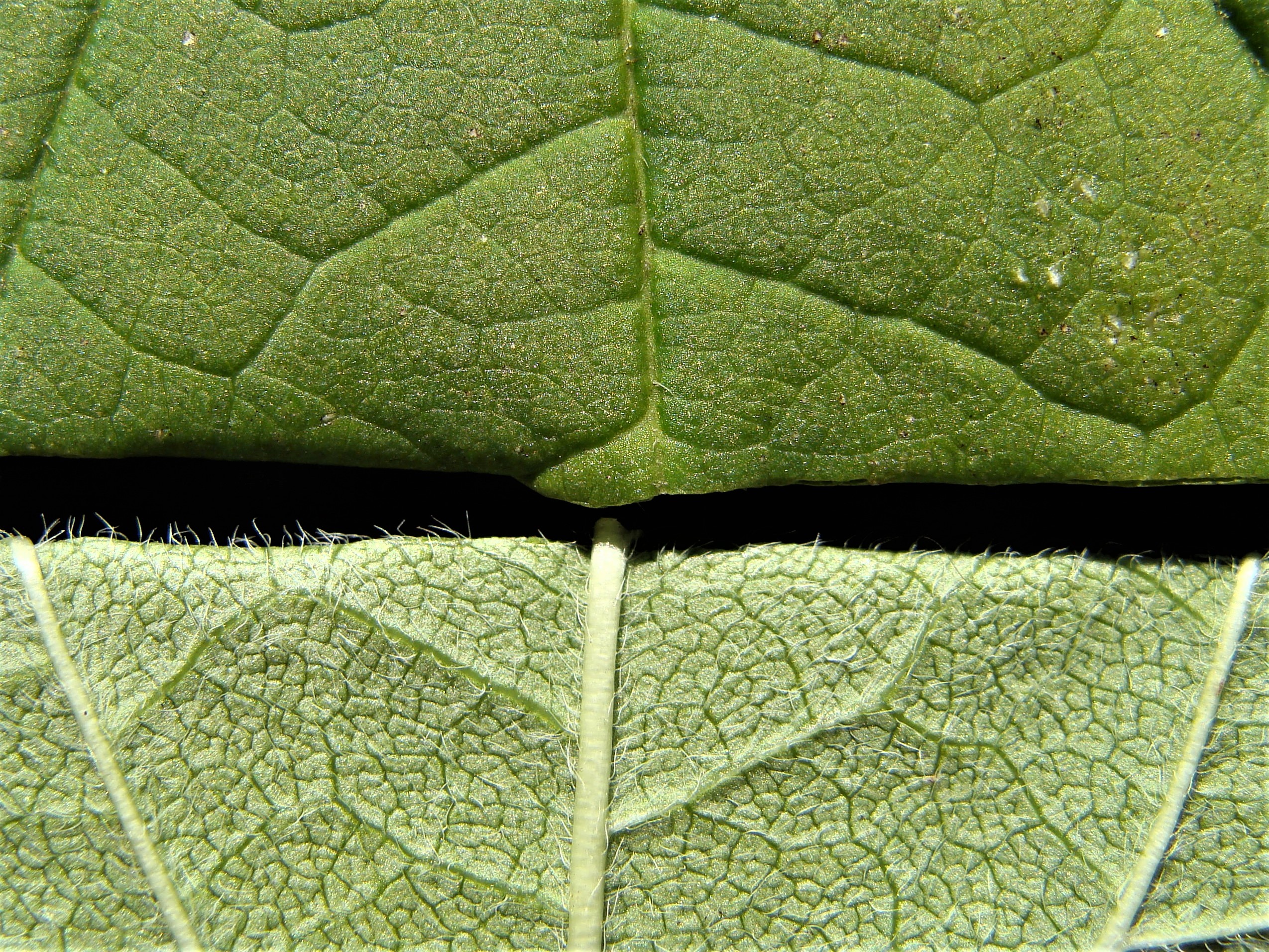
In late April into May, terminal and axillary, perfect flowers (with male and female parts) develop at the tips of new-growth twigs. Three to 11 flowers may occur on a twig, so that the inflorescence appears raceme-like. Flowers are 1+ inch wide and long with an inferior ovary beneath a perianth of 4 triangular sepals and 4 overlapping, somewhat cupped, showy white petals. Stamens are numerous: 30+. Four white styles are united below, divided and spreading above, with elongate, light yellow stigmas extending outward from the flower center. Stamens, with strongly ribbed anthers and yellow pollen, attach in a double row around the rim of the ovary. The slender white filaments are erect, so that the anthers are positioned at or just below the stigmas. Pedicels and ovary are glabrous. Sepals are covered with downy pubescence within. Following anthesis, petals, stamens and stigmas quickly drop off .
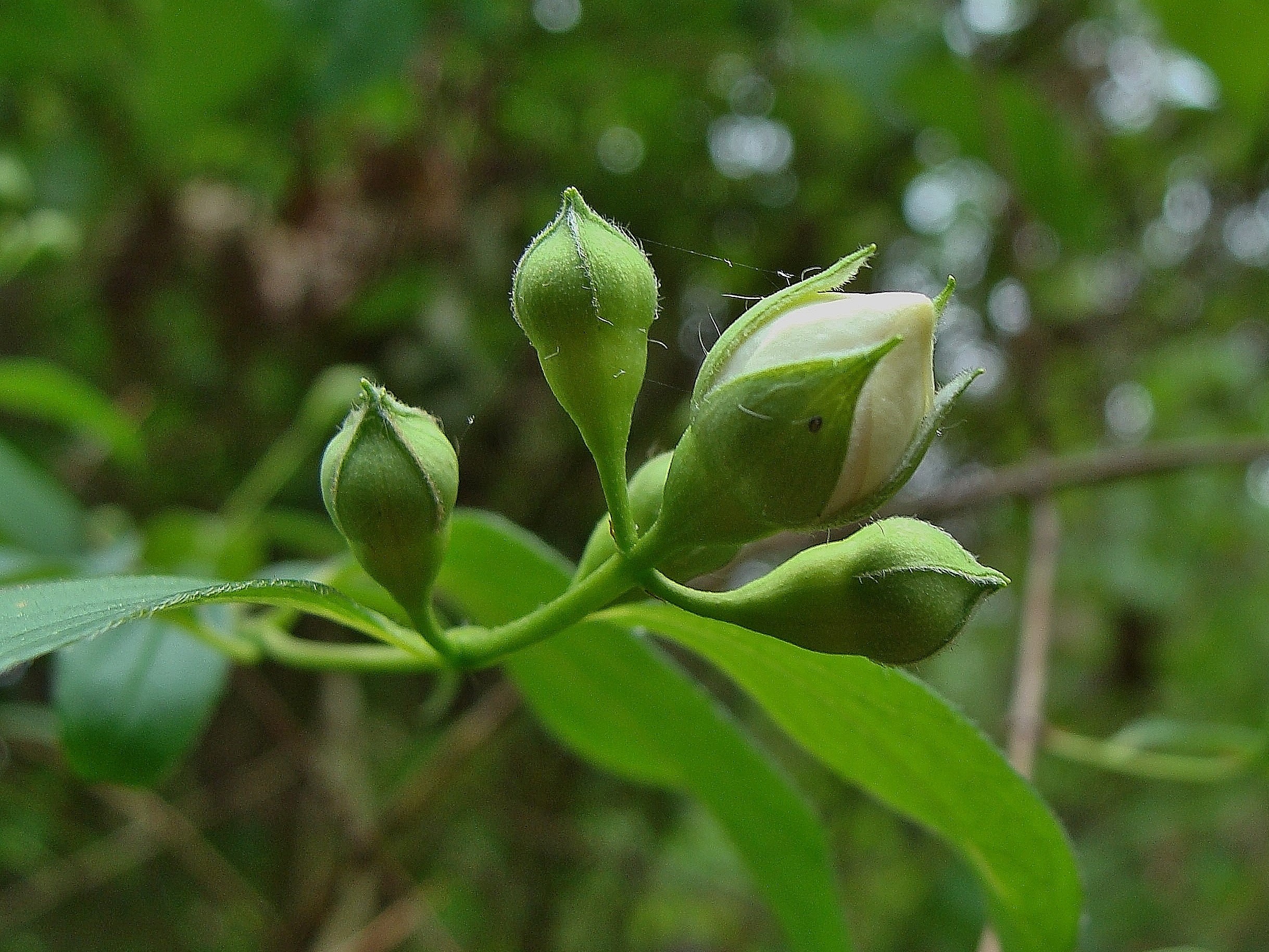
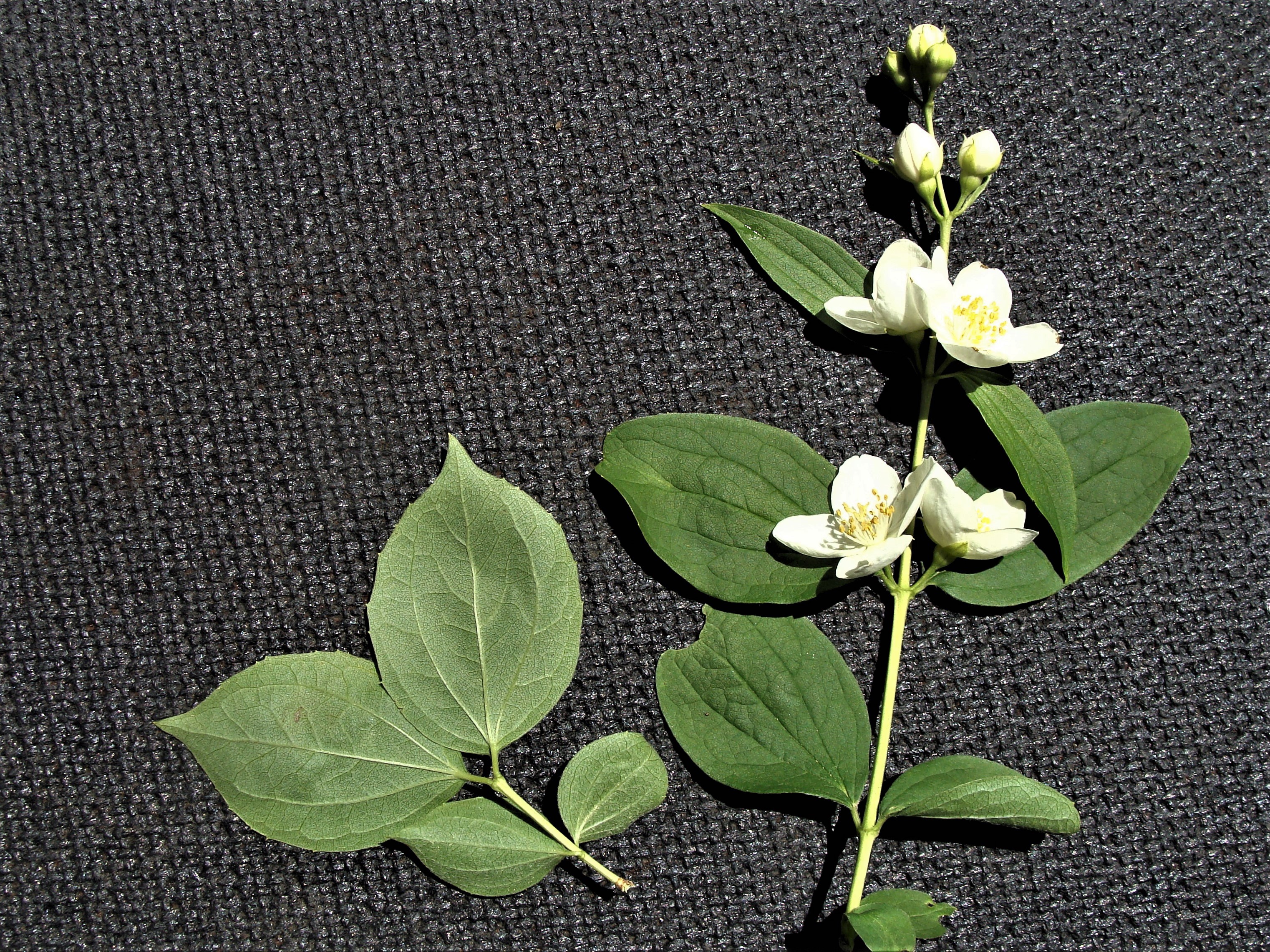
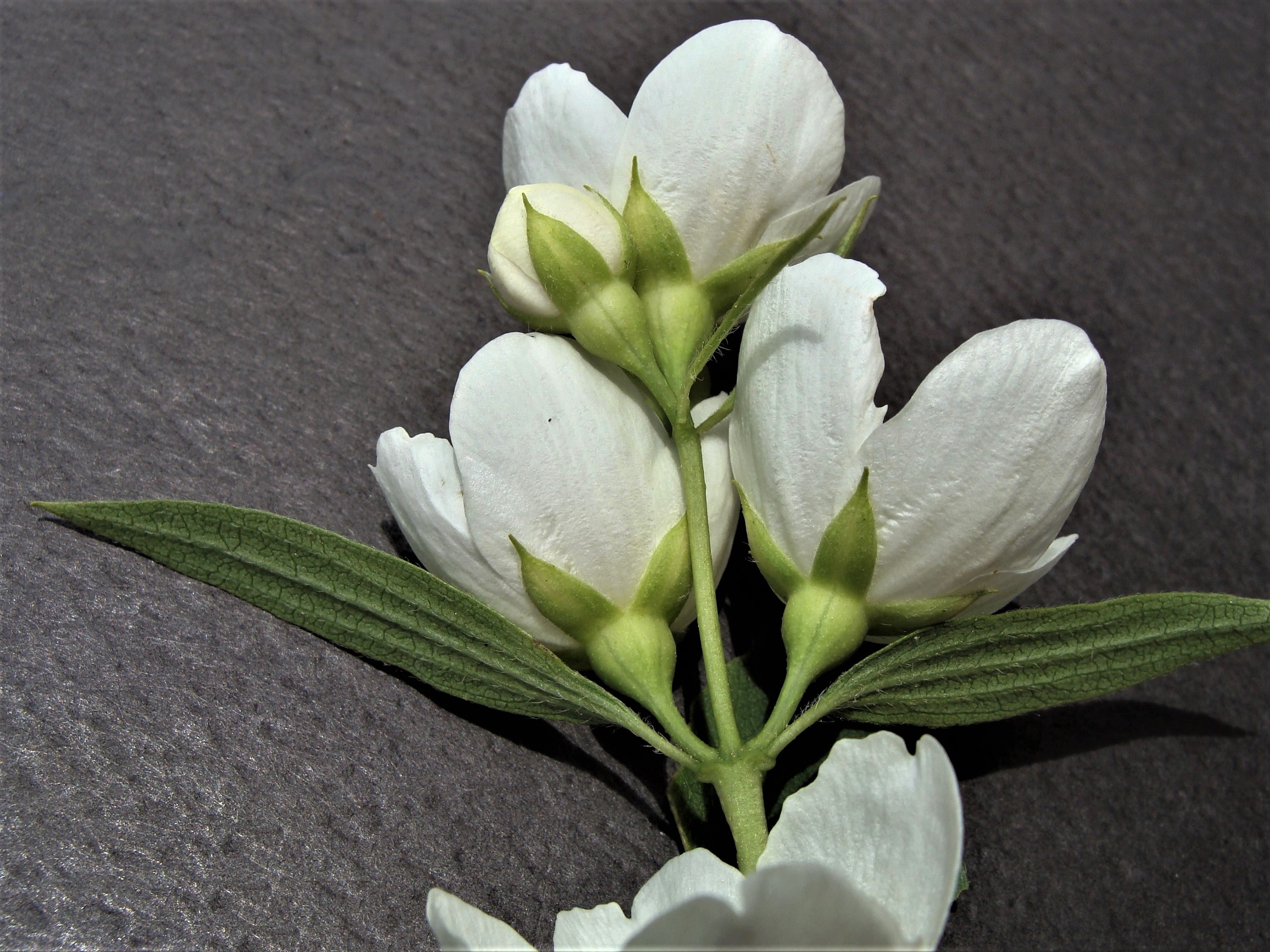
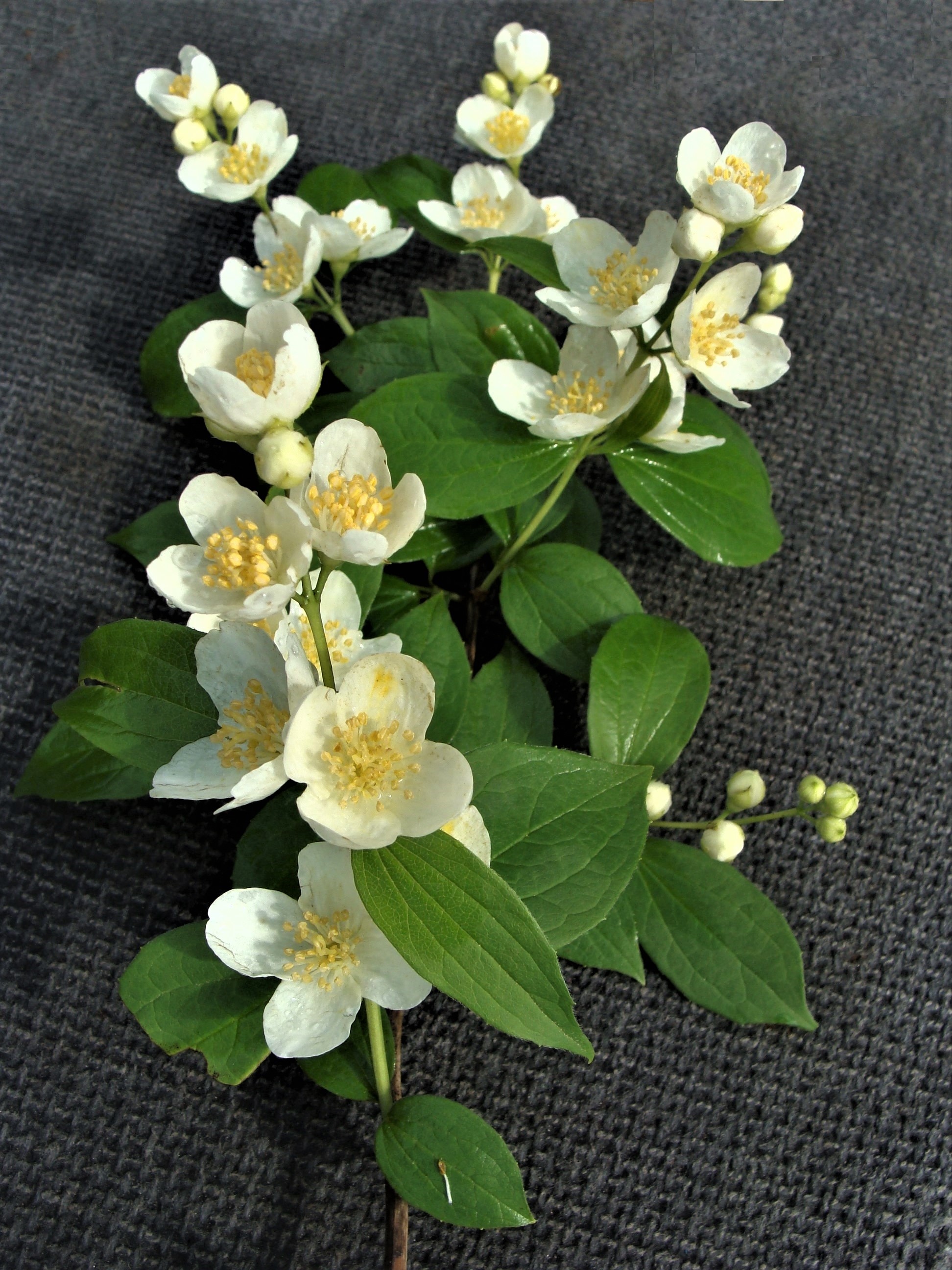
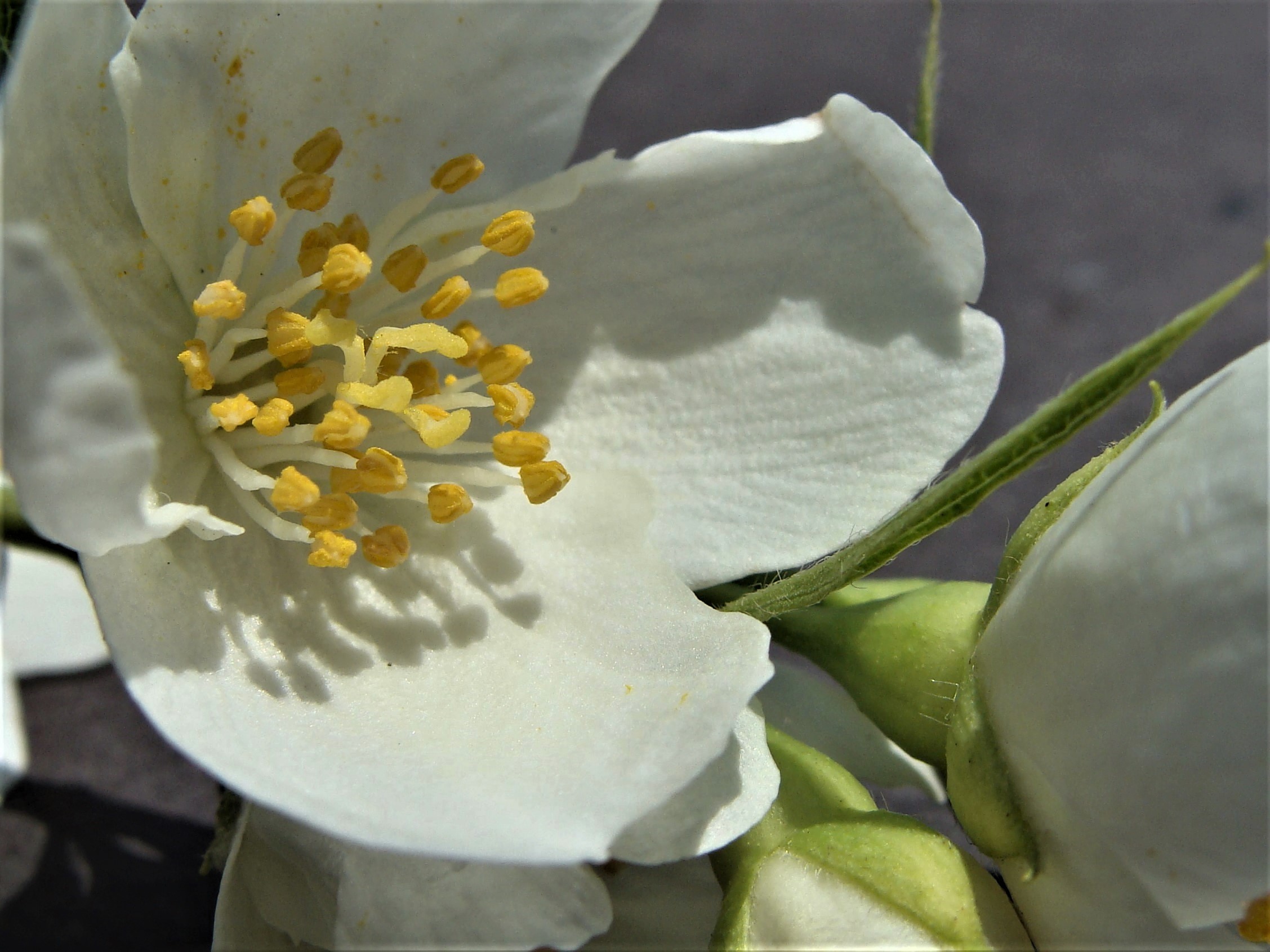
Fertilized flowers produce upright urn-shaped capsules that are about ¼ inch long and wide. Capsules mature from pale green to golden brown to dark brown. Sepals and the united styles are persistent. By mid-September, capsules are divided into bulging, pie-shaped segments that split across the top into 4 sections. Seed attachment is along a central (axile) placenta in each chamber. After splitting, capsules persist and gradually deteriorate over late fall into the winter months. Seeds are released from the top of the capsule. The numerous elongate golden to reddish brown seeds, to ⅛ inch long, have an irregular fusiform shape.
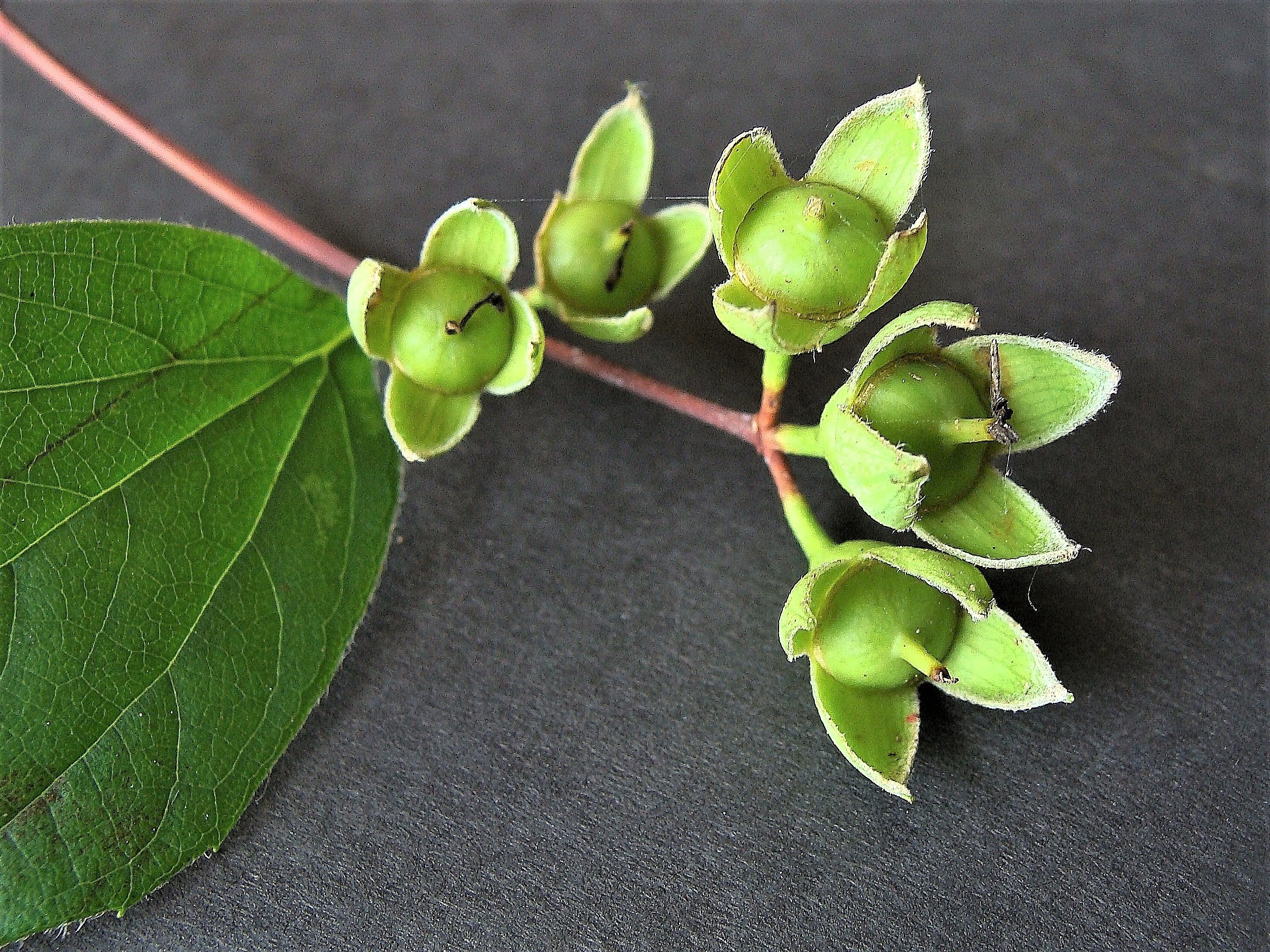
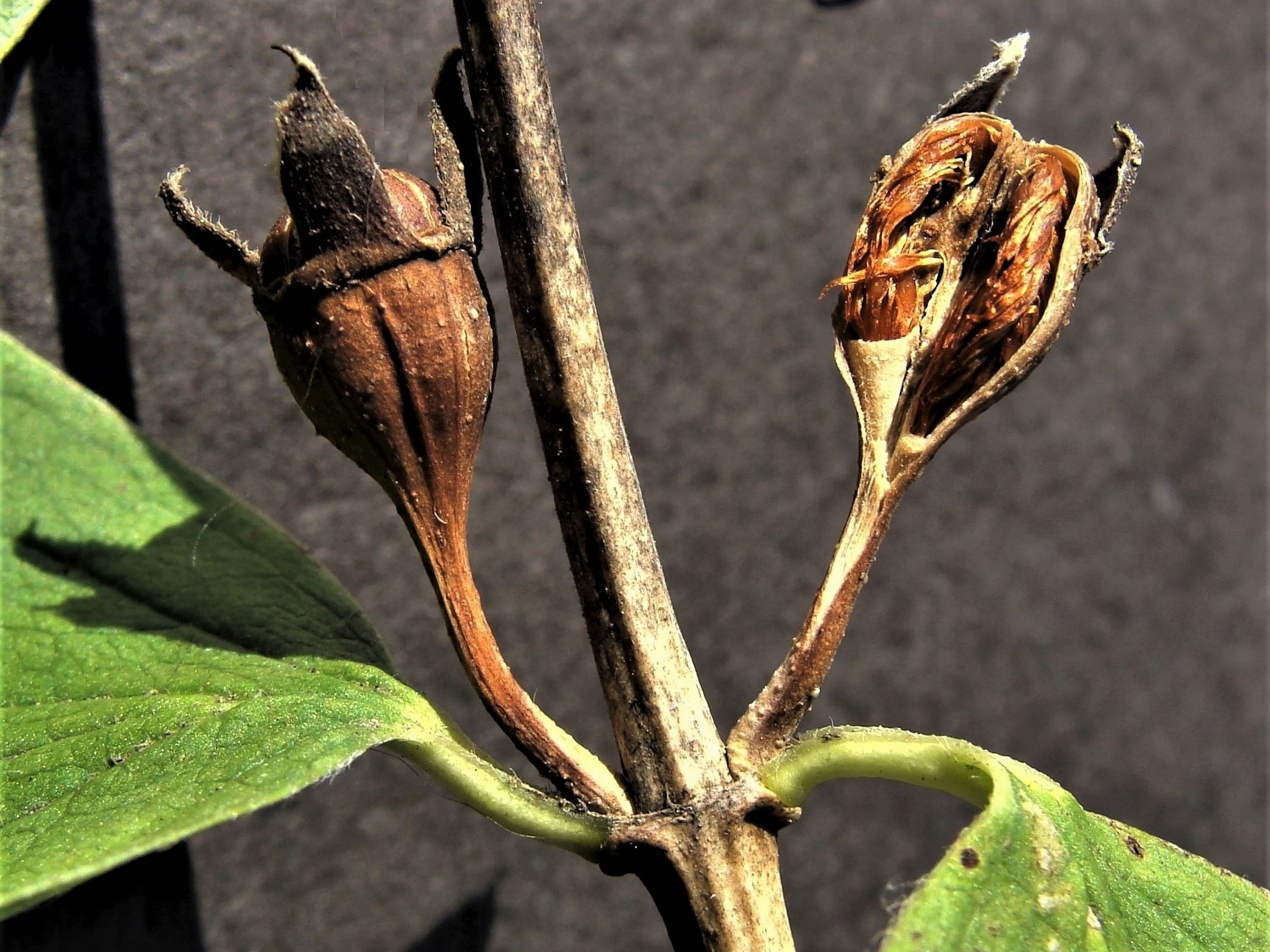
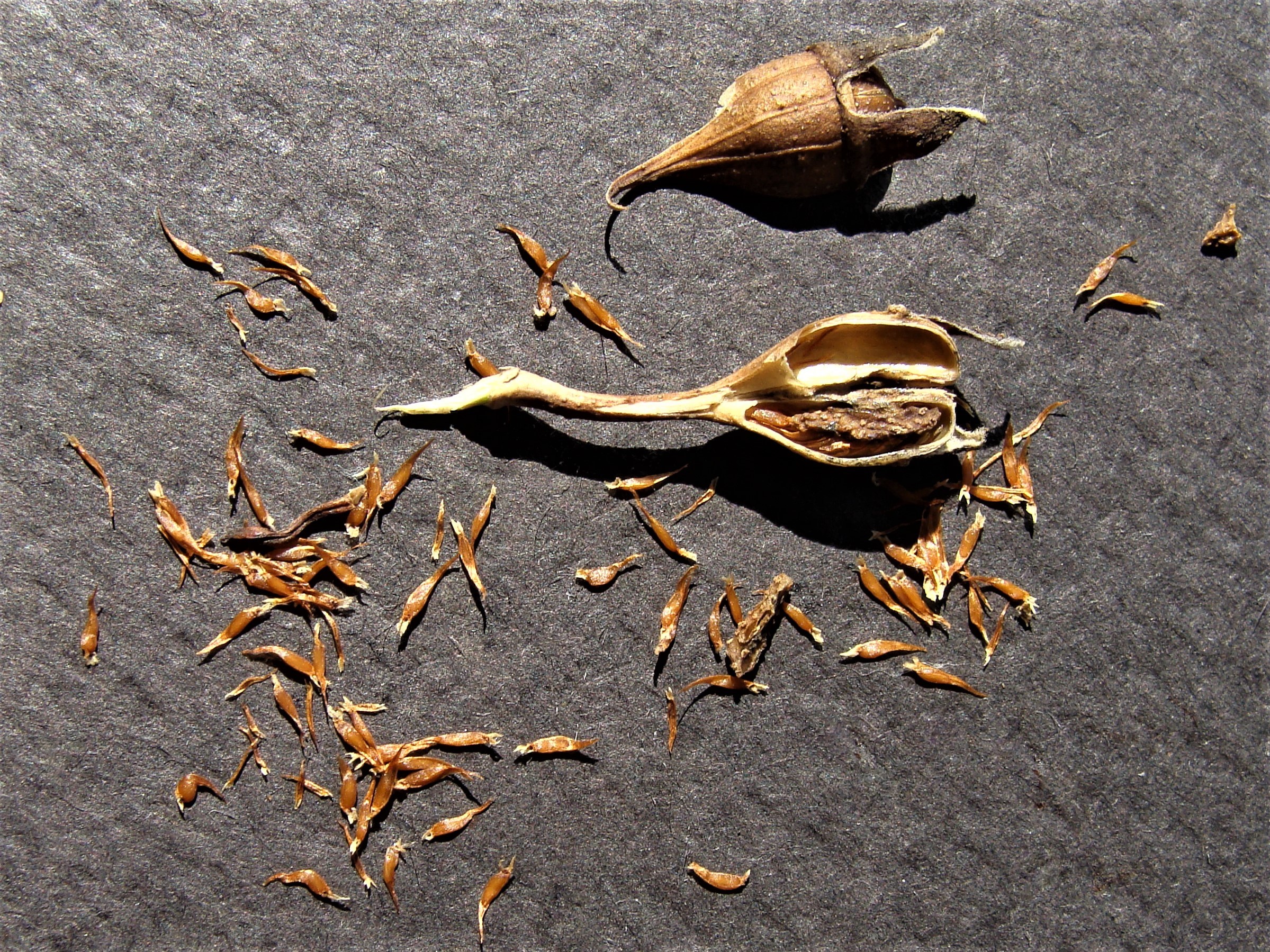
Ozark Mock Orange in a garden or natural area is most notable for the cascades of large showy white flowers. Young shrubs are mostly upright while older stems of mature shrubs become spreading and arching. Leaves are not showy in fall. Clonal offset plants are fairly easy to transplant. Best flowering occurs in more sunny sites.
Two additional species of mock orange have been recorded in Arkansas: the native Hairy Mock Orange (Philadelphus hirsutus) and the adventive-native Appalachian Mock Orange (Philadelphus inodorus). Ozark Mock Orange can be distinguished from Hairy Mock Orange by its 1) hidden axillary buds, 2) larger flowers with spreading stigmas, and 3) leaves that feel smooth on their upper surface. Ozark Mock Orange can be distinguished from Appalachian Mock Orange by its 1) smaller flower petals and fewer stamens, 2) larger leaves that are broadly ovate, and 3) pubescent leaves.
Article and photographs by ANPS member Sid Vogelpohl

